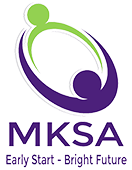Children need smaller portions than adults. Approximately 1 tablespoon of each type of food for every year of the child’s age is an ample portion size in most cases. For example, a three-year-olds’ plate might contain 3 tablespoons of chicken, 3 tablespoons or rice, and 3 tablespoons of vegetables.
FAQ Category: NUTRITION
What happens if my child won’t eat a lot?
Put your child in charge of how much he eats. Trust your child’s appetite center. The most common reason many children never seem hungry is that they have so many snacks that they never become truly hungry. Drinking too much milk can reduce a child’s appetite as well.
Why should I teach my child to feed himself?
The main way to prevent feeding struggles is to teach your child how to feed himself at as early an age as possible. You can wait for your infant to show you when he is ready to eat (by leaning forward, for example) and allow him to pace the feeding himself (by such indications as turning his head). Do not insist that he empty the bottle, finish a jar of baby food, or clean the plate. By the time your child is 6-8 months of age, start giving finger foods. Such foods allow him to feed himself at least some of the time. By 12 months, your child will begin to use a spoon, and by 15 months he should be able to feed himself completely. This is your child’s first step towards independence.
Should my child eat snacks during the day?
Children need to snack throughout the day—in addition to being offered regularly scheduled meals. However, try to discourage large snacks or beverages other than water around mealtimes. This way, your child will be hungry enough to eat with the rest of the family. Some snacking suggestions are: yogurt (low-fat or nonfat), dry cereal (low sugar), crackers (whole grain, low fat), plain mini bagels or whole grain breads with jelly or peanut butter, fruit, graham, crackers, pretzels, and carrot or celery sticks with low fat yogurt dip. Provide a variety of foods, giving your child practice with foods with different textures.
How much milk should my child have during the day?
This can be discussed with your child’s pediatrician, and is based on your child’s age, weight and height. Keep in mind that milk contains as many calories as most solid foods. Drinking too much milk can fill up children and dull their appetites.
How can I get my child to give up the bottle?
Try to offer liquids in a cup at about six months old. Offer about ¼ of an ounce of liquid in small, open plastic cup. Hold the cup while your baby learns how to adjust his lips to the edge. If your child is having difficulty drinking from a cup, try the suggestions below:
1. Use thicker liquids – Your child’s little mouth needs practice to drink from a cup. Try using thick liquids or purees at first. A jar of strained pears makes a great shake; it’s a familiar taste and the puree is easier than milk or juice for your child’s mouth to control. The puree moves more slowly, and is heavier, making it easier to control.
2. Choose the right cup – Be sure the mouth of the cup is not too big. There are a variety of lidded cups available. For most children, a spouted cup is fine. If your child needs to learn more oral skills, consider using a lidded cup with no spout. This provides your child’s mouth with the same feeling as drinking from the cup lip, and prevents spills.
